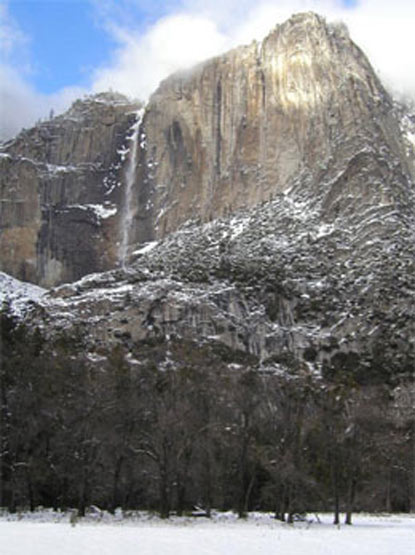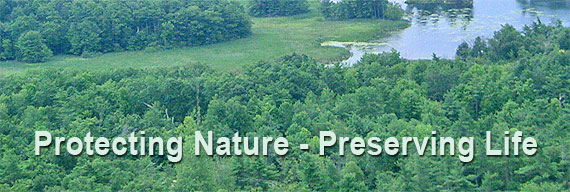Chapter 3
Snow-Storms
As has been already stated, the first of the great snow-storms that
replenish the Yosemite fountains seldom sets in before the end of
November. Then, warned by the sky, wide-awake mountaineers, together
with the deer and most of the birds, make haste to the lowlands or
foothills; and burrowing marmots, mountain beavers, wood-rats, and
other
small mountain people, go into winter quarters, some of them not again
to see the light of day until the general awakening and resurrection of
the spring in June or July. The fertile clouds, drooping and condensing
in brooding silence, seem to be thoughtfully examining the forests and
streams with reference to the work that lies before them. At length,
all
their plans perfected, tufted flakes and single starry crystals come in
sight, solemnly swirling and glinting to their blessed appointed
places;
and soon the busy throng fills the sky and makes darkness like night.
The first heavy fall is usually from about two to four feet in depth
then with intervals of days or weeks of bright weather storm succeeds
storm, heaping snow on snow, until thirty to fifty feet has fallen. But
on account of its settling and compacting, and waste from melting and
evaporation, the average depth actually found at any time seldom
exceeds
ten feet in the forest regions, or fifteen feet along the slopes of the
summit peaks. After snow-storms come avalanches, varying greatly in
form, size, behavior and in the songs they sing; some on the smooth
slopes of the mountains are short and broad; others long and river-like
in the side cañons of yosemites and in the main cañons,
flowing in
regular channels and booming like waterfalls, while countless smaller
ones fall everywhere from laden trees and rocks and lofty cañon
walls.
Most delightful it is to stand in the middle of Yosemite on still clear
mornings after snow-storms and watch the throng of avalanches as they
come down, rejoicing, to their places, whispering, thrilling like
birds,
or booming and roaring like thunder. The noble yellow pines stand
hushed
and motionless as if under a spell until the morning sunshine begins to
sift through their laden spires; then the dense masses on the ends of
the leafy branches begin to shift and fall, those from the upper
branches striking the lower ones in succession, enveloping each tree in
a hollow conical avalanche of fairy fineness; while the relieved
branches spring up and wave with startling effect in the general
stillness, as if each tree was moving of its own volition. Hundreds of
broad cloud-shaped masses may also be seen, leaping over the brows of
the cliffs from great heights, descending at first with regular
avalanche speed until, worn into dust by friction, they float in front
of the precipices like irised clouds. Those which descend from the brow
of El Capitan are particularly fine; but most of the great Yosemite
avalanches flow in regular channels like cascades and waterfalls. When
the snow first gives way on the upper slopes of their basins, a dull
rushing, rumbling sound is heard which rapidly increases and seems to
draw nearer with appalling intensity of tone. Presently the white flood
comes bounding into sight over bosses and sheer places, leaping from
bench to bench, spreading and narrowing and throwing off clouds of
whirling dust like the spray of foaming cataracts. Compared with
waterfalls and cascades, avalanches are short-lived, few of them
lasting
more than a minute or two, and the sharp, clashing sounds so common in
falling water are mostly wanting; but in their low massy thundertones
and purple-tinged whiteness, and in their dress, gait, gestures and
general behavior, they are much alike.

|













